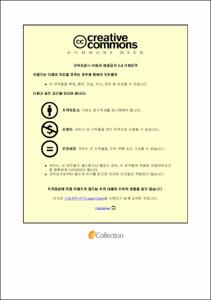부신 우연종 환자의 적합한 치료 방향 결정에 관여하는 예후 예측 인자 분석
- Alternative Title
- Analysis of Prognostic Predictors Associated with Determining Appropriate Treatment Direction for Patients with Adrenal Incidentaloma
- Abstract
- 부신 우연종은 부신질환 이외 질병에 대한 검사에서 발견되는 부신 종양으로, 대개 비기능성이고 양성으로 알려져 있다. 전산화단층촬영 (CT) 영상이 진단 및 감별에 도움이 되며, 기능성이거나 악성인 경우 수술적 절제의 대상이 된다. 비기능성 부신 우연종은 주로 경과관찰의 대상이지만, 특정 환자군에서 적절한 치료를 위해 부신 절제술을 필요로 하는 경우가 있다. 본 연구의 목적은 비기능성 부신 우연종 환자에서 적합한 치료 방향을 결정하는데 관련 있는 예후 인자를 알아보는 데 있다.
본 연구는 단일기관 후향적 연구로, 2000년 1월부터 2020년 12월까지 서울아산병원 내분비외과, 내분비내과를 내원하여 비기능성 부신 우연종을 진단받은 환자들을 대상으로 하였다. 환자들을 수술군과 경과관찰군으로 나누고, 수술군 내에서 병리결과가 악성인 환자들과 양성 샘종인 환자들을 추가로 비교하였다. 기본 임상 정보와 혈액검사, CT 소견과 병리결과를 정리하였고, 특히 CT 소견 중 종양의 크기, 하운스필드 단위, 세척값 과 같이 악성 부신종양과 관련 있는 값을 측정 및 계산하였다.
총 307명의 환자가 본 연구에 포함되었고, 수술군 환자 127명, 경과관찰군 환자 180명이었다. 수술군이 경과관찰군에 비해 평균 나이가 어리고, 평균 종양 크기가 큰 것으로 나타났다 (p<0.05). 수술군에서 부신절제술 이유로 가장 많이 차지한 것은 종양 크기가 4 cm 이상인 경우로 35.4%였고, 그 다음 25.2%의 환자에서 종양 크기의 증가로 인해 수술을 시행하였다. 경과관찰군에서는 50명 (28.8%)의 환자가 경과관찰 중 종양 크기의 증가를 보였다. CT 소견을 비교했을 때 수술군에서 경과관찰군보다 대부분의 형태적 특징, 모든 악성 종양 관련 특징이 더 높은 비율로 나타났으며, 수술군에서 병리결과를 분석했을 때 부신 샘종이 25%로 가장 많았고, 그 다음은 전이암 (14%)이었다.
수술군 내 추가분석에서 악성 종양군과 샘종군 모두 평균 크기는 4 cm보다 작았고, 악성 종양군은 샘종군에 비해 종양이 불규칙한 경계를 가진 경우, 절대적 세척값이 60% 미만이거나 상대적 세척값이 40% 미만인 환자가 더 높은 비율로 나타났다.
결론적으로, 비기능성 부신 우연종은 항상 좋은 예후를 보이지 않으므로 감별진단을 거쳐 적절히 치료하는 것이 중요하다. 본 연구 결과 CT 소견 중 하운스필드 단위와 세척값과 같이 악성 종양과 관련 있는 특징들은 수술적 치료 결정에 도움이 되었다. 하지만, 기존에 제시된 수술적 치료 기준인 4 cm 이상 크기는 악성 부신종양을 예측하는데 적합하지 않았다. 따라서 부신 우연종 환자에서 앞서 언급된 특징들을 보이는 경우, 비기능성이라고 경과관찰하기 보다는 적절한 치료를 위해 수술적 절제를 적극적으로 고려해야 한다.|Introduction: Adrenal incidentaloma is mostly nonfunctional and benign, mostly detected during other medical examinations. Computed tomography (CT) findings help the detection and differential diagnosis of such tumor. Functional and malignant tumors are indicated for surgical treatment. Nonfunctioning adrenal incidentaloma usually undergoes regular follow up. However, in certain patients, they may require treatment such as adrenalectomy to receive appropriate treatment even with the nonfunctional adrenal incidentalomas. This study aims to evaluate the prognostic predictors associated with determining appropriate treatment direction in patients with adrenal incidentaloma.
Materials and Methods: This is a retrospective, single tertiary center study in patients with nonfunctioning adrenal incidentaloma diagnosed from January 2000 to December 2020. Patients were divided into two groups; surgery group and observation group. Then, subgroup analysis was performed between malignant and benign adenoma patients in the surgery group. Baseline characteristics, biochemical test results, CT findings and pathologic results of surgery group were collected. Also, CT scan findings associated with malignant potential features such as tumor size, Hounsfield unit (HU) and washout values were measured and calculated.
Results: Of all, 307 patients were included in this study, with 127 patients in surgery group and 180 patients in observation group. Surgery group was younger and had larger tumor size compared to observation group (p<0.05). The most common reason for adrenalectomy in surgery group was tumor size 4 cm or larger (35.4%) at the time of diagnosis, while 25.2% of patients had tumor size increase during the follow-up as a reason for surgery. Regarding CT findings, surgery group presented certain morphological features and malignant potential features more than observation group. Dominant pathologic results in surgery group were adrenal cortical adenoma (25%), followed by metastatic carcinoma (14%). Within the surgery group, mean tumor size was less than 4 cm in both malignancy group and adenoma group (3.79 cm and 3.05 cm, respectively, p=0.645). Malignant group showed more irregular border on CT, having more patients with absolute washout less than 60% and relative washout less than 40% than adenoma group.
Conclusion: Characterization of nonfunctioning adrenal incidentaloma is important to provide appropriate treatment for adrenal incidentaloma patients since every adrenal incidentaloma does not present favorable prognosis. Findings of CT scan associated with malignant potential
such as HU and washout values were supportive to decide the need of surgical treatment. However, conventional size criteria of 4 cm or larger for surgery was not reliable to predict malignancy in this study. Surgical resection of adrenal incidentalomas should be considered in certain group of patients presenting aforementioned factors to receive appropriate treatment rather than observation.
- Issued Date
- 2024
- Awarded Date
- 2024-02
- Type
- Dissertation
- Alternative Author(s)
- Jung Jongwon
- Affiliation
- 울산대학교
- Department
- 일반대학원 의학과
- Advisor
- 성태연
- Degree
- Master
- Publisher
- 울산대학교 일반대학원 의학과
- Language
- eng
- Rights
- 울산대학교 논문은 저작권에 의해 보호받습니다.
- Appears in Collections:
- Medicine > 1. Theses (Master)
- 파일 목록
-
-
Download
 200000736389.pdf
기타 데이터 / 1.53 MB / Adobe PDF
200000736389.pdf
기타 데이터 / 1.53 MB / Adobe PDF
-
Items in Repository are protected by copyright, with all rights reserved, unless otherwise indicated.